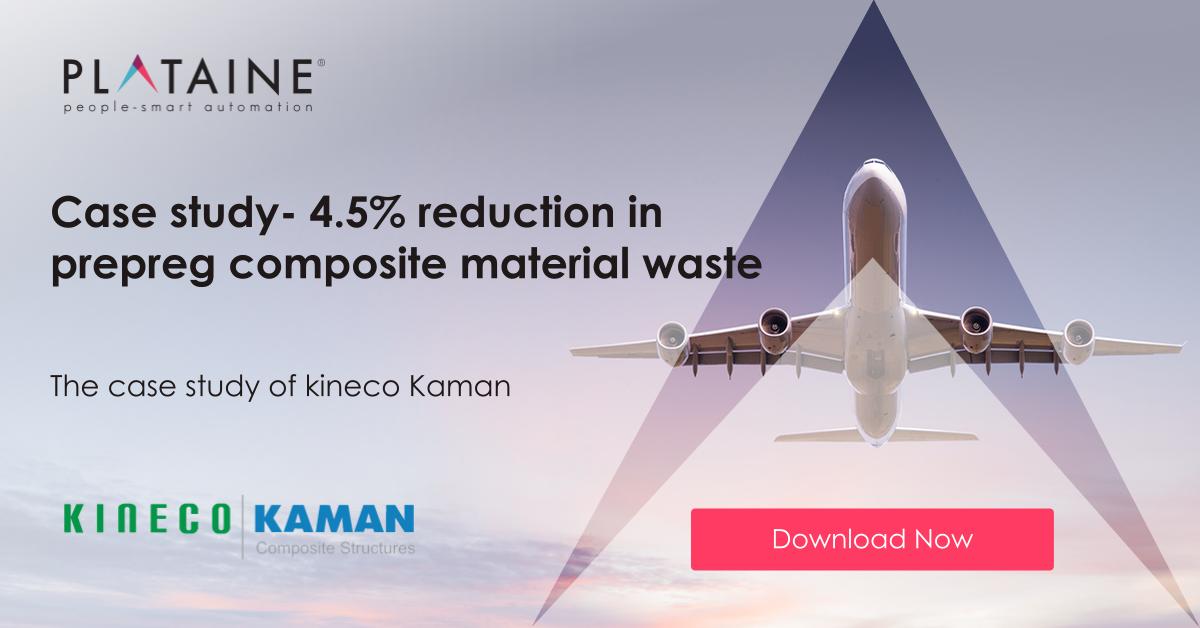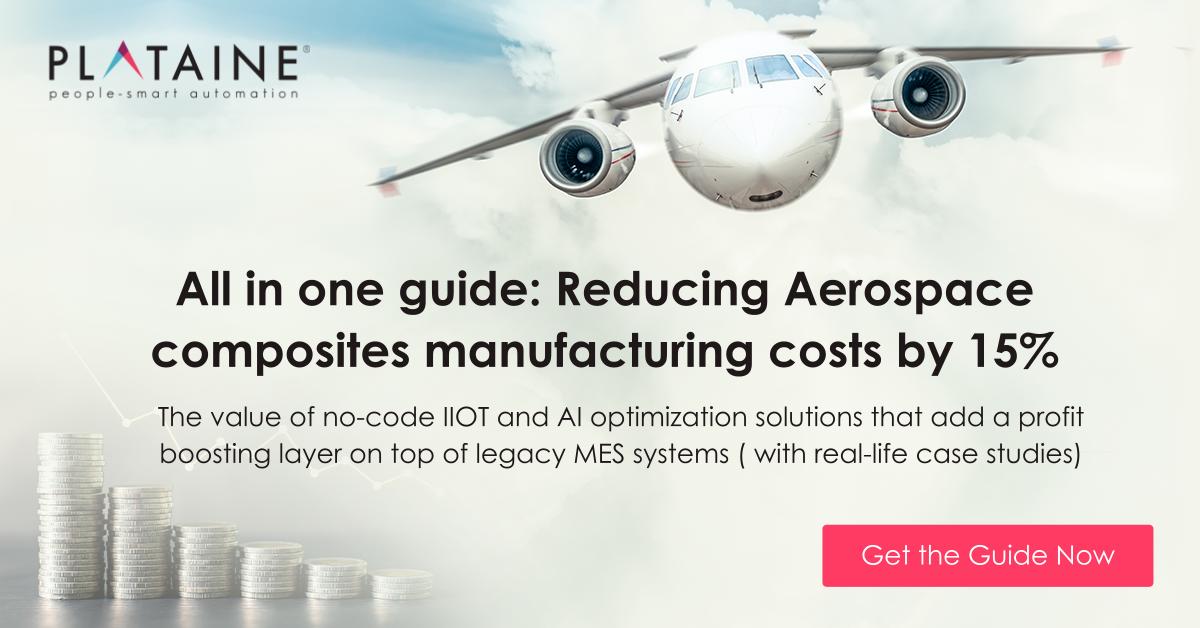The aerospace composite manufacturing industry is in the midst of digital transformation. You could say that not so long ago, reams of binders ruled the average shop floor. Paper was used to capture manufacturing data, handle resource management, scheduling, capacity planning, and manage operations. The introduction of digitalization started with simple excel files and then with manufacturing execution systems (MES) and enterprise resource planning (ERP) thus, beginning the paradigm shift from paper to paperless management.
MES and Manufacturing ERP systems defined the paperless transition of the last two decades. These disruptive technologies were used to collate and aggregate manufacturing data to streamline manufacturing processes. MES solved and still solves crucial challenges such as managing complex data and taking advantage of data analytics.
But, nonetheless, these systems were initially built for another era and to be honest did not manage to completely eliminate the paperwork. We witness a lot of paper documentation that travels together with work orders or inventory transactions.
Today, the aerospace composite industry’s challenges have changed and technology capacities have evolved tremendously.
Fluctuating demand, disrupted supply chains, a Covid19 world, hyper competitive landscape, dropping margins, talent shortage, workforce deficiencies, managing materials with shorter shelf-lives, are just to name a few challenges.
On the other hand, Industry 4.0 technology evolved to offer extremely-automated workflows, data-driven insights with specific recommendations, predictive analysis and more, based on artificial intelligence powered by mighty cloud computing.
Traditional and legacy systems are missing these capabilities. What is lost, then? Read the case study below>>
No sir, Industry 4.0 doesn’t mean having a MES or an ERP
Industry 4.0 brought new levels of interconnectivity, smart automation of traditional manufacturing processes and predictability features. You can think of Industry 4.0 as the layer that turns software from being reactive into being proactive. Proactive Intelligence!
Four phases play important roles in the actualization and application of Industry 4.0 – connecting interrelated processes, IoT based data collection, analyzing aggregated data to extract patterns, and insights that include actionable recommendations based on accurate predictions. Pretty much like taking the knowledge and experience of masters in factory floor management and making it available to anyone in the organization.
Another example from our day-to-day life is the advanced car navigation systems we use on our smartphones, they provide simple instructions to reach our destination in the quickest route while avoiding traffic, roadblocks and alike. When road conditions change, the app calculates your route in close-to realtime. It responds to changes unlike the static nature of most ERP and MES systems.
Traditional MES and ERPs provide a solution that meets just one of the asic enablers to Industry 4.0 enhancements, and that is data collation and organization. Important? Yes, absolutely. Mandatory? Yes as well. Enough? Absolutely not in today’s era.
MES and ERP without AI and extreme automation capabilities means they lack the ability to respond to what really happens on your factory floor and have become one-dimensional legacy solutions in a multi-dimensional context where automating workflows and data-driven insights are essential to cost reduction and profit optimization.
For example, in today’s dynamic and competitive manufacturing landscape, facilities of known brands employ IIoT to automatically capture data from legacy equipment and to connect interrelated processes, releasing workforce for other tasks and reducing related human errors. Then, data is aggregated and analyzed in order to identify patterns and auto generate recommendations for specific actions to take in order to minimize waste, ensure maximal OEE and meet the deadline.
This can only be done due to the combination between IIoT and artificial intelligence.
The result is in profitability increase as a consequence of rework minimization, maximal automation, waste reduction and more. In today’s low-margin hyper competitive pandemic recovery world, profitability range is a matter of life or death for a manufacturing business.
Leveraging automation and predictive modeling empowers manufacturers with the means to forestall downtime, increase production capacity, coordinate between freezers and autoclaves, manage time sensitive composite materials and optimize productivity thereby increasing profitability through increasing efficiency and minimizing operational costs.
Conversely, the manufacturers relying on traditional MES or ERP only may have records highlighting increased customer demand and available inventory but cannot automate the generation of agile plans to respond to change fast enough.
In the hyper-competitive aerospace composite industry dealing with the aftermath of a pandemic, the manufacturer that relies on traditional MES or ERP may remain stagnant or lose business to competition that fully embraces Industry 4.0.
Black Swan
The Covid-19 pandemic provided a real-world event that exposed the limitations of traditional MES and ERPs. At the height of the pandemic, restrictions to travel dramatically affected the supply chain, workforce was enforced to work from remote (if at all) and passenger traffic dropped at unprecedented levels. The results were canceled aircraft orders that lead to Airbus and Boeing reducing their production forecasts by approximately 50%.
The butterfly effect of the pandemic such as the need to implement social distancing and sanitization regulations, as well as material shortages were also new challenges aerospace composite manufacturers had to deal with. The pandemic put approximately 46 million jobs in the aerospace industry at risk and showcased the need for operational resilience through the implementation of comprehensive digitalization solutions.
The pandemic put the spotlight on the limitations of traditional MES and ERP systems to provide the flexibility aerospace composite manufacturers required to deal with disruptive changes, and their limitation in offering recommendations that can help decision makers in the field. These systems could not:
- Provide optimized schedules to ensure production continued while health restrictions were in place.
- Offer predictive capabilities, intelligence and automation capabilities to compensate for tasks that were stuck due to workforce limitations.
- Reallocate resources or provide accurate recommendations where material availability, expiration dates, and the status of workstations were critical factors impacting completion times.
- Develop agile operational plans that respond to changing production constraints in real-time or nearly real-time.
Back to business
The reopening of domestic and international travel routes have kick-started the aerospace industry’s recovery process.
Encouraging signs such as Airbus and Boeings projections of significant increase in output means suppliers including aerospace composite manufacturers must be prepared to meet this unprecedented increase in demand while compensate for pandemic-inspired losses
As with the pandemic, traditional MES and ERP systems are ill-equipped with the features needed to proactively and aggressively reduce costs in order to increase profitability and resilience.
Alarming signs
These alarming signs highlight the limitations of MES and ERP systems and how they hinder your facility’s ability to handle the demands that come with the recovery period:
Levels of Process Automation
Three levels of process automation exist. Let’s examine that through the process of dealing with the arrival of composite materials showcases the differences. If on arrival:
- You have to manually record the number of materials received in a ledger or excel sheet; there is no automation integrated into your operations.
- You manually record the arrival data and input the data sets into a MES or ERP system then some automation occurs.
- You are requested by the system to increase the inventory, then you put the materials in storage and IoT sensors manage the recording and shipment update process while communicating updates about available inventory to workstations means that almost full automation is in place. When the system asks you to take out materials from the freezers, and instructs you on what to do further in order to meet a goal of 100% autoclave throughput, then it’s even closer to 100% automation. You get the idea.
Thus, these are the three levels of process automation – no automation, some automation, and full automation. Traditional MES and ERPs may already integrate with some IoT solutions, but at the base level, they are supported by manually inputting data. The limited automation MES provides stagnates your business through:
- Repetitive, time-consuming tasks that lead to human error when collecting data and an overhead on the workforce.
- Not automating the record updates that relate to material shelf-life, material and tooling availability.
- Not automating the resource allocation and capacity planning process.
AI Capabilities
To respond effectively to a variety of challenges, manufacturers need data-driven insights based on patterns that lean on historical data, in order to make optimal decisions. “Should this task be performed in this station? Should I order more material? What % of my inventory is about to expire? What demand can I meet with a 50% workforce? Is this deadline at risk and if yes how to prevent faults?”
MES and ERP systems collect, aggregate and organize data but are not capable of executing in-depth analysis and calculations to provide answers to complex operational problems – this is where AI must come into the picture.
Today’s technological game changers are focused on:
- Developing and implementing predictive maintenance, as well as alert systems to reduce downtime and optimize productivity.
- Recommending the right schedule to optimize and speed up production cycles to meet deadlines.
- Considering constraints such as material expiration date, material availability and their effects on a project.
- Automating the development of operational plans that manage the thawing, layup and curing processes, eliminating bottlenecks to improve throughput.
Traceability and Visibility
Traditional MES and ERPs rely on a lot of manually fed data. That means you are in charge of updating crucial information into your systems otherwise the picture is hardly complete. In this scenario, you are responsible for the accuracy of your systems by providing it with the information it needs instead of the other way around.
An AI layer on top of your MES is needed in order to:
- Automate the provision of material expiry data
- Provide correlations between defects to their root cause
- Create the asset’s full genealogy by correlating material to parts (down to the serial number)
- Automatically recalculate parts’ shelf-life based on properties inherited from related parts
Can MES become great again?
The short answer to the above question is – yes, but major upgrades are required.
Aerospace composites manufacturers are already boosting the functionalities of their traditional MES or ERP systems by adding a dedicated AI layer that leans on their data collection and add capabilities as described above. Such solutions can provide their own ROI within less than 6 months from implementation, so you can consider them risk free.
Summary
Aerospace composites manufacturers were hit hard by Covid19. They now have to work on recovery more than any other manufacturing industry. The key is cutting costs and increasing efficiency, as part of the current stage of recovery.
In order to meet these goals they need to upgrade their existing MES or ERPs software to fully implement Industry 4.0 capabilities that are tailored to the Aerospace composites industry.
Many of them are already successfully harnessing AI and IoT layers and use them to gain a competitive edge and keep their pricing aggressively low while still being profitable. That’s the definition of a game changing scene.







